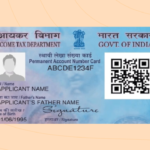
The Char Dham Yatra commenced in April this year (Source: uttarakhandtourism.gov.in)
Uttarakhand, also called Devbhoomi or the Land of Gods, is home to many temples and warmly receives devotees throughout the year. The Char Dham Yatra is one of the most significant pilgrimage circuits in Uttarakhand that draws countless devotees, among the various religious sites that they visit. The term Char Dham refers to the four holy places in Uttarakhand state, which are Yamunotri, Gangotri, Kedarnath, and Badrinath. These four destinations are believed to be the abode of gods and goddesses and are considered highly sacred by Hindus.
These shrines — situated at high altitudes — are closed for approximately six months annually, starting with the arrival of winter (October or November), and reopening during summer (April or May). The pilgrimage is undertaken by thousands of devotees every year, who believe that a visit to these holy sites will wash away their sins and grant them salvation.
This year, the much-awaited pilgrimage commenced on April 22, 2023, with the opening of Gangotri and Yamunotri temples in Uttarakhand’s Uttarkashi district and is expected to conclude on November 21, 2023. As per the schedule, the doors of Gangotri Dham were opened at 12:35 pm and Yamunotri Dham at 12:41 pm. The portals of Kedarnath opened on April 25 and Badrinath on April 27.
The Char Dham Yatra is traditionally believed to be completed in a clockwise direction. The pilgrimage begins from Yamunotri, proceeds to Gangotri, then to Kedarnath, and eventually culminates at Badrinath. The journey can be undertaken by road or air, with helicopter services also available. Some devotees opt for a Do Dham Yatra, which involves a pilgrimage to two shrines, namely Kedarnath and Badrinath.
Gangotri: Gangotri is situated at an altitude of 3,100 meters and is the source of the Ganga River. The main attraction here is the Gangotri temple, which is dedicated to the goddess Ganga. The temple opens on Akshaya Tritiya and tentatively closes on Diwali.
Kedarnath: Located at an altitude of 3,583 meters, Kedarnath is one of the 12 Jyotirlingas and is dedicated to Lord Shiva. The temple here is believed to have been built by the Pandavas during the Mahabharata era. The temple opens after Akshaya Tritiya and tentatively closes on Bhai Dooj.
Badrinath: Badrinath is situated at an altitude of 3,133 meters and is dedicated to Lord Vishnu. The main attraction here is the Badrinath temple, which is believed to have been established by Adi Shankaracharya in the 8th century. The temple opens after Akshaya Tritiya with its closing date announced on Vijayadashami.
The Char Dham Yatra is a physically demanding journey that requires trekking at high altitudes. As such, it is important to undertake this journey with proper planning and preparation. The Uttarakhand government has taken several measures to ensure the safety and comfort of pilgrims during the yatra.
“It is important for the devotees to register themselves before travelling to Chardham Yatra and Hemkund Sahib. To ensure a smooth journey, the Uttarakhand government has set up a capping to the number of daily travellers,” says the official website, asking everyone to check the validity on the portal and complete the registration before travelling at registrationandtouristcare.uk.gov.in.
In light of the difficult journey, the following health measures are advised for a comfortable and safe pilgrimage by the Uttarakhand government
*All pilgrims should proceed for Yatra after a thorough health check-up.
*People with pre-existing illnesses should carry adequate supplies of prescribed medicines along with prescriptions and contact details of their respective physicians.
*Senior Citizens, people with comorbidities, and those who have suffered from COVID-19 in the past should consider postponing or not undertaking the pilgrimage.
*The travel itinerary should include at least one day’s rest before reaching the final pilgrimage site.
*Please carry adequate quantities of woollen/ warm clothes.
*Patients suffering from heart diseases, respiratory ailments, diabetes, and hypertension should be extra cautious while undertaking travel to high altitudes.
*In case you notice symptoms that include headache, dizziness, drowsiness, chest tightness, nausea, vomiting, coughing, fast breathing, and increased heart rate, please seek medical attention immediately or contact the 104 and 108 helplines for assistance.
*Avoid consumption of alcohol and other drugs and refrain from smoking.
*To protect skin from sunlight, sunscreen with SPF 50 may be used.
*Sun glasses may also be used to protect eyes from UV rays.
*Keep yourself well hydrated and avoid travelling on an empty stomach.
*Take frequent breaks during trekking/walking.
*Avoid strenuous exercise at high altitudes.
*In case of emergencies, Helpline numbers [108 – National Ambulance Service and 104- Uttarakhand Health Helpline] can be contacted.
Here are some travel tips for the mountain routes in Uttarakhand.
Dos:
*It is mandatory to get your vehicle(s) registered.
*The driver should keep a list of all the passengers sitting in the vehicle.
*Give way to vehicles going uphill on mountain roads first.
*The driver should keep all the valid documents of the vehicle, and keep an extra stepney.
*You must get a green card from the transport office before travelling.
*Be sure to honk on the turns on the mountain roads.
*While parking the vehicle, usage of the hand brake is a must. Parking should be done at the designated place only.
*Carry proof or a scanned QR code with you.
Don’ts:
*Do not drive on mountain roads before 4 am and after 10 pm.
*Do not overtake on the road turns.
*Do not drink and drive.
*Do not travel sitting on the top of the vehicle.
*Do not litter dirty clothes and polybags.
*Do not use private vehicles for commercial purposes.









Leave a Reply